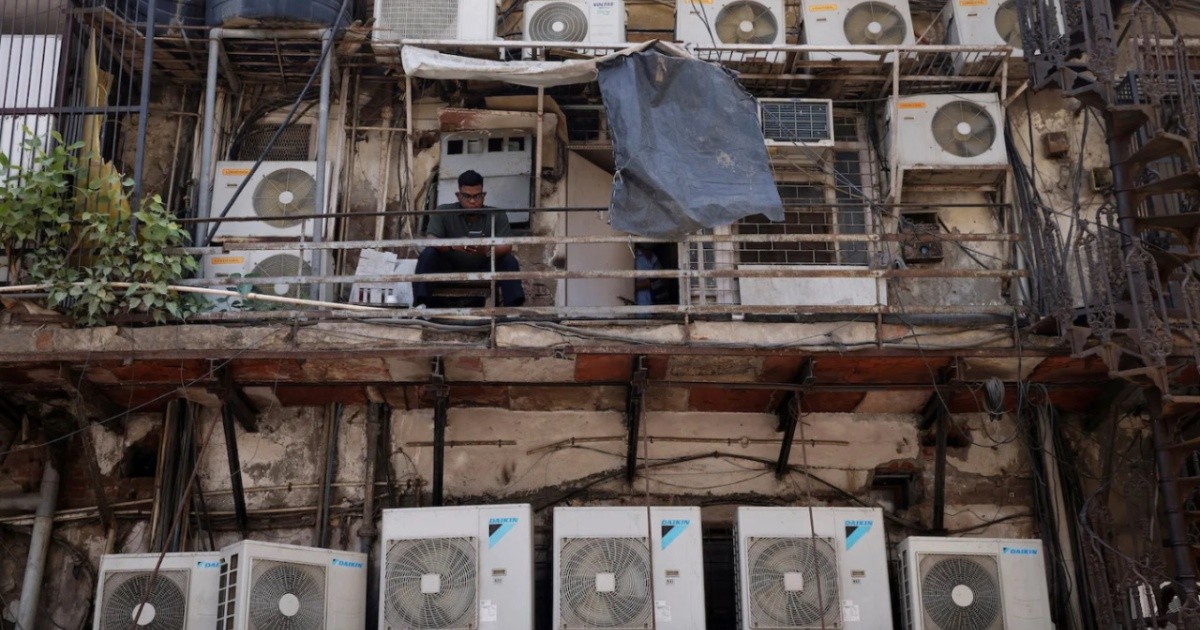More than 60 countries have committed, including China and the United States Reducing greenhouse gas emissions resulting from cooling systemsWith an eye toward providing “universal access to life-saving cooling, relieving pressure on power grids and saving trillions of dollars by 2050.”
The signatory countries participated in the call “Cooling Commitment” Within the framework of the ongoing negotiations at the United Nations COP28 climate summit held in Dubai.
Inger Andersen, Executive Director of the United Nations Environment Program (UNEP), acknowledged that the development of refrigeration systems “must grow to protect everyone from rising temperatures, maintain food quality and safety, stabilize vaccines, and produce economies.”
However, he highlighted it “This growth should not come at the cost of the energy transition and more severe climate impacts.”
Environmental cost of cooling
Cooling systems, especially air conditioning systems, release hydrofluorocarbons (HFCs), greenhouse gases that account for seven percent of all emissions that heat the atmosphere and could reach 10% by 2050, as their use grows.
On the other hand, UNEP data estimates this More than a billion people are at high risk of extreme heat due to lack of access to refrigerationThe vast majority of them are in Africa and Asia. In contrast, nearly a third of the world’s population is exposed to deadly heat waves more than 20 days a year.
In this context, refrigeration provides relief to people and is also essential for other vital areas and services such as global food security and vaccine storage and supply.
Although at the same time, conventional systems such as air conditioning are one of the main causes of climate change. If not managed properly, energy needs for space cooling will triple by 2050, along with associated emissions.
If current growth trends continue, Consumption from refrigeration equipment, which today represents 20% of total electricity consumption, will double by 2050.. The United States, China, and Japan account for two-thirds of air conditioning systems worldwide.
For this reason, facing the middle of this century, the vast majority of countries agreed to work so that the planet’s temperature in that year would not exceed about 1.5°C above pre-industrial era (1850-1900) levels.
The governments of 63 countries have already committed to this Reducing greenhouse gas emissions from cooling systems by 68% by 2050Compared to 2022 levels.
What does the “cooling obligation” consist of?
Sustainable cooling measures have been proposed in Three regions: Passive cooling (with air sinks in appliances that consume little energy), raising energy efficiency standards, and gradually reducing greenhouse refrigeration methods.
some Higher efficiency standards and better labeling on all refrigeration equipment Average global equipment efficiency will triple in 2050 compared to current levels. This should be added to the rapid decarbonisation of the electrical grid, to reduce sectoral emissions by up to about 96%.
With these new standards, up to 3.5 billion more people will be allowed to benefit from refrigerators, air conditioners or passive cooling between now and 2050. Peak power demand will also decrease by 1.5 to 2 terawatts, which is approximately Weak current generating capacity. For the European Union, investments in energy generation equivalent to between four and five billion dollars will be avoided.
In addition, end-user electricity bills will be capped at $1 trillion in 2050, and $17 trillion cumulatively between 2022 and 2050.
Promoters of the new commitment at the UN Climate Change Conference (COP28), whose deliberations will continue until December 12, hope that at least 80 countries will support it, including the most populous country, India, which could record the largest… Growth in demand for security systems, with a population of 1.4 billion people. In the coming decades.


:quality(85)/cloudfront-us-east-1.images.arcpublishing.com/infobae/AN4SSTXQSJAFLDHGM632WCGBQ4.jpg)


